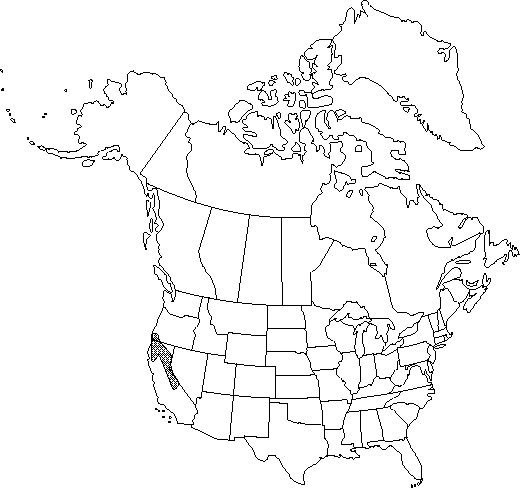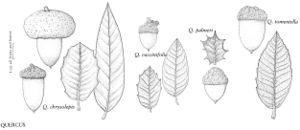Difference between revisions of "Quercus vacciniifolia"
Proc. Calif. Acad. Sci. 1:96. 1855.
imported>Volume Importer |
RevisionBot (talk | contribs) m (Bot: Adding category Revised Since Print) |
||
| Line 106: | Line 106: | ||
}}<!-- | }}<!-- | ||
| − | -->[[Category:Treatment]][[Category:Quercus sect. Protobalanus]] | + | --> |
| + | |||
| + | [[Category:Treatment]] | ||
| + | [[Category:Quercus sect. Protobalanus]] | ||
| + | [[Category:Revised Since Print]] | ||
Latest revision as of 14:26, 15 December 2020
Shrubs, low spreading to often prostrate, to 1.5 m. Twigs branching at 45° angles or less, reddish-brown, 1-1.5 mm diam., flexible, glabrous to sparsely pubesent. Terminal buds conic, 2.5 mm, scales brown with ciliate margins. Leaves: petiole 5-8 mm, sparsely pubescent, flattened adaxially. Leaf-blade oblong-ovate, 10-35 × 7-15 mm, flat, thin, leathery, base slightly rounded to acute, secondary-veins inconspicuous, 6-8 pairs, branching at 45-60° angles, with weakly thickened cell-walls, margins entire or indistinctly and irregularly mucronately toothed, apex acute or rarely obtuse; surfaces abaxially whitish green with waxy layer, glabrous or slightly pubescent with stellate hairs, adaxially dull gray-green, glabrous or sparsely pubescent with stellate hairs. Acorns solitary or rarely paired; cup shallowly saucer-shaped to slightly turbinate, 3-4 mm deep × 10-15 mm wide, scales appressed, slightly embedded, moderately silvery brown-pubescent; nut ovoid, 8-17 × 5-10 mm, apex acute; nut scar to 3 mm diam.
Phenology: Flowering in early summer.
Habitat: Dry ridges, steep slopes, and rocky areas from montane coniferous zone to near treeline
Elevation: 900-2800 m
Distribution

Calif., Nev., Oreg.
Discussion
Typical high-elevation populations in the Sierra Nevada of California can be distinguished from all shrubby forms of Quercus chrysolepis by the absence of glandular trichomes and by thin cups with small nut-attachment scars. At lower elevations in northern California and southwestern Oregon, secondary contact with Q. chrysolepis has resulted in the formation of hybrids.
Selected References
None.
